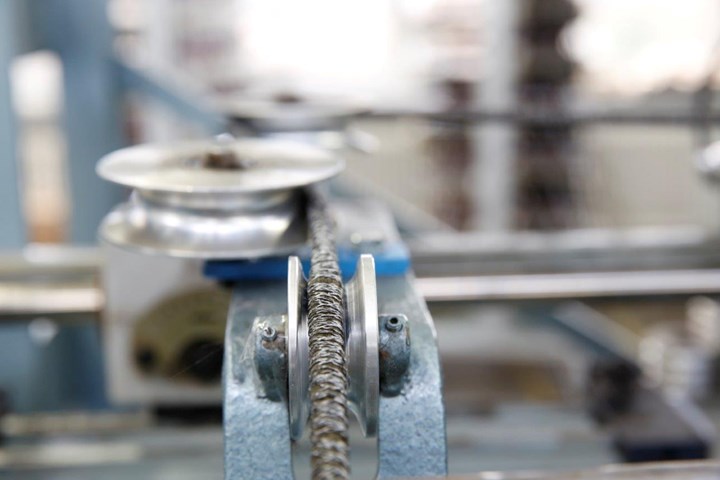CAMX 2022 exhibit preview: Gerster TechTex
Gerster TechTex’s gussets/corner reinforcements and fillers are intended to reinforce the corners of composite parts in automotive, wind and sports industries.
Gerster TechTex, a business unit of Gustav Gerster GmbH & Co. KG (Biberach an der Riß, Germany), is a specialty textile manufacturer for the composites market. Its focus is component-adapted reinforcement textiles for the automotive, wind power and sports articles industries. The company uses manufacturing processes such as weaving, knitting or braiding.
One of Gerster’s innovations, gussets/corner reinforcements and fillers, are intended to reinforce corners. They are applied in areas that need to be filled and/or areas that are difficult to reach with other textile semi-finished products. This is particularly the case for interior angles found in composite components, the company notes, where surfaces usually meet at right angles and can be reinforced on both sides with piping-like fiber cords. Corner reinforcements made of carbon fiber rovings are used in round composite components such as centrifuges or carbon fiber-reinforced polymer (CFRP) rims (e.g., to fill cavities or to reinforce certain areas in the circumferential direction). This reportedly enables an increase in permissible rotational speed and the bursting strength of CFRP components.
Even large composite structures such as wind turbine blades benefit from corner reinforcements, Gerster contends. Rotor blades, which are mainly made of glass fibers and carbon fibers, have large wall thicknesses in the area of the load-bearing spar caps. Here, very large quantities of rovings are integrated in the longitudinal direction of the rotor blade. These fiber bundles can be arranged and thus infiltrated more evenly with resin if the rovings are preformed into relatively thick, mostly round corner reinforcements. Gerster says the precise fiber orientation of its corner reinforcement innovation minimizes waviness and improves the strength and rigidity of the composite structure. Especially in the inner angles between spar caps and the supporting walls, high dynamic forces occur during rotor blade operation due to torsion and longitudinal bending. Notch stresses can be effectively reduced by using the corner reinforcements.
Related Content
-
“Structured air” TPS safeguards composite structures
Powered by an 85% air/15% pure polyimide aerogel, Blueshift’s novel material system protects structures during transient thermal events from -200°C to beyond 2400°C for rockets, battery boxes and more.
-
Jeep all-composite roof receivers achieve steel performance at low mass
Ultrashort carbon fiber/PPA replaces steel on rooftop brackets to hold Jeep soft tops, hardtops.
-
Cryo-compressed hydrogen, the best solution for storage and refueling stations?
Cryomotive’s CRYOGAS solution claims the highest storage density, lowest refueling cost and widest operating range without H2 losses while using one-fifth the carbon fiber required in compressed gas tanks.












.jpg;maxWidth=300;quality=90)
